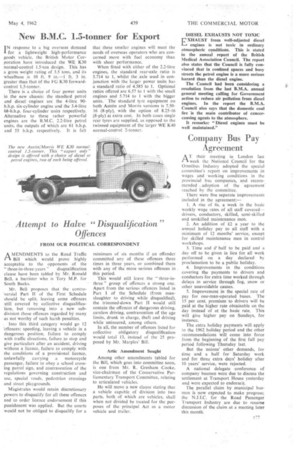New B.M.C. L5-tonner , for Export I N response to a big
Page 63

If you've noticed an error in this article please click here to report it so we can fix it.
overseas demand for a lightweight high-performance goods vehicle, the British Motor Corporation have introduced the WE 1<30 normal-control 1.5-ton design. This has a gross weight rating of 3.5 tons, and its Wheelbase is 10 ft. 9 in.-1 ft. 3 in. greater than that of the FO 1<30 forward
control 1.5-tonner.
There is a choice of four power units in the new chassis: the standard petrol and diesel engines are the 4-litre 90b.h.p. six-cylinder engine and the 3.4-litre 6&-b.h.p. four-cylinder units respectively. Alternative to these rather powerful engines are the B.M.C. 2.2-litre petrol units, the outputs of which are 61 b.h.p. and 55 b.h.p. respectively. It is felt that these smaller engines will meet the needs of overseas operators who are concerned more with, fuel economy than with sheer performance.
When fitted with either of the 2.2-litre engines, the standard rear-axle ratio is 5.714 to 1, -.whilst the ,axle used in conjunction with the larger power units has a standard ratio of 4.585 to L Optional ratios offered are 6.57 to 1 with the small engines and 5.714 to I with the bigger units. The standard tyre equipment on both Austin and Morris versions is 7.5016 (8-ply), with the option of 8.25-16 (8-ply) at extra cost. In both cases single rear tyres are supplied, as opposed to the twinned equipment of the larger WE K40 normal-control 2-tonner.


































































































































































































































































